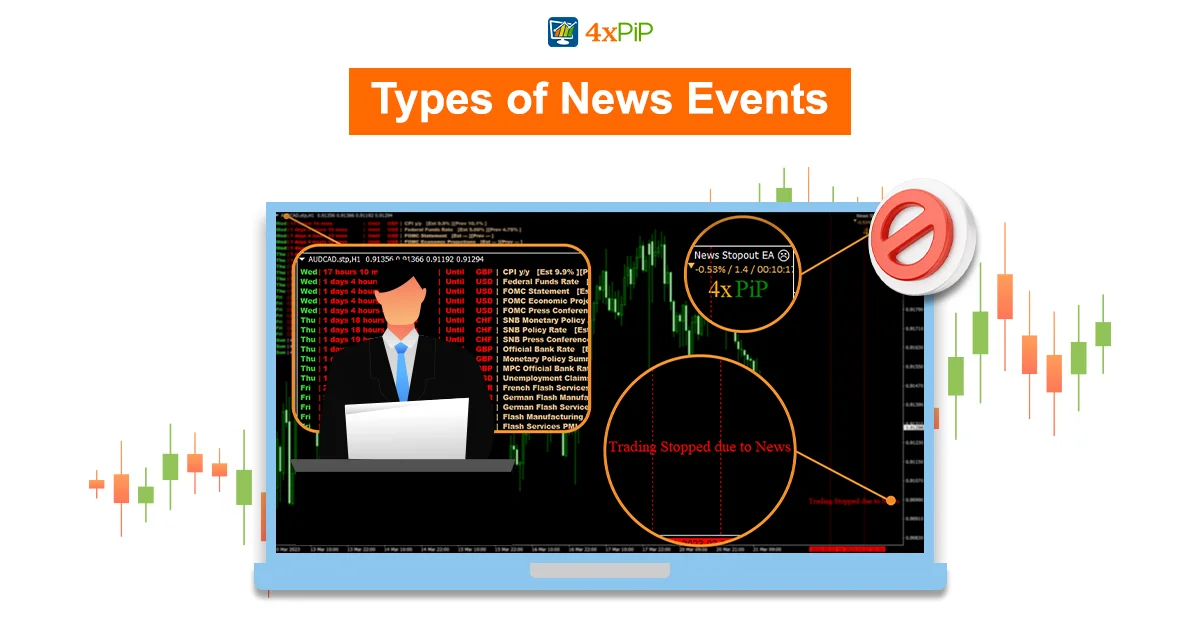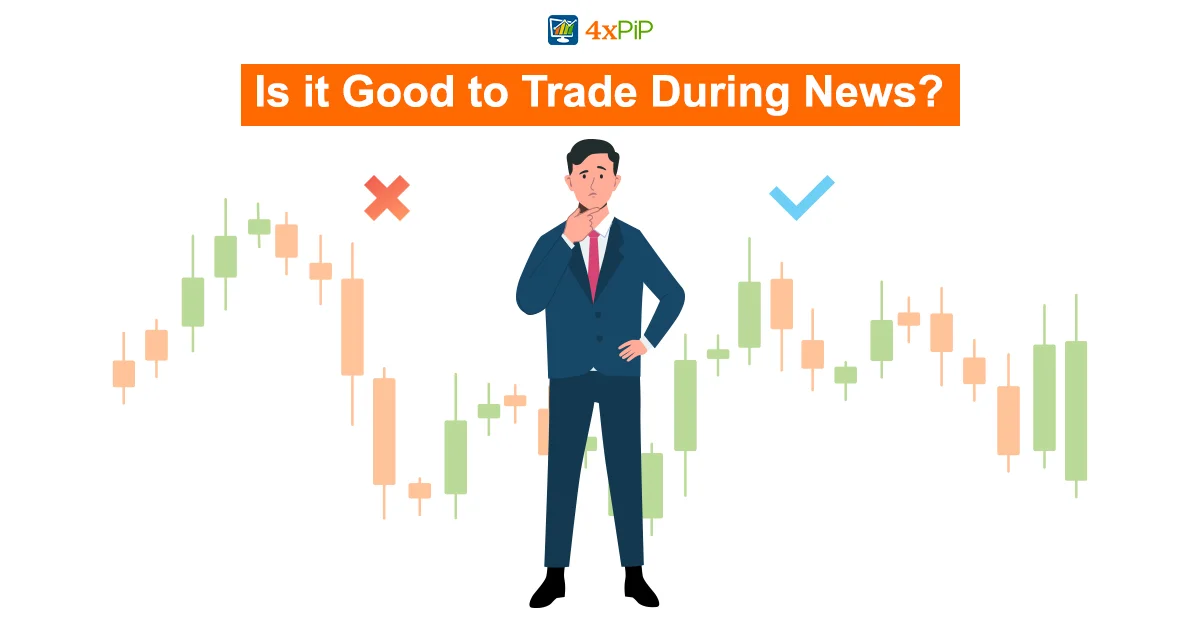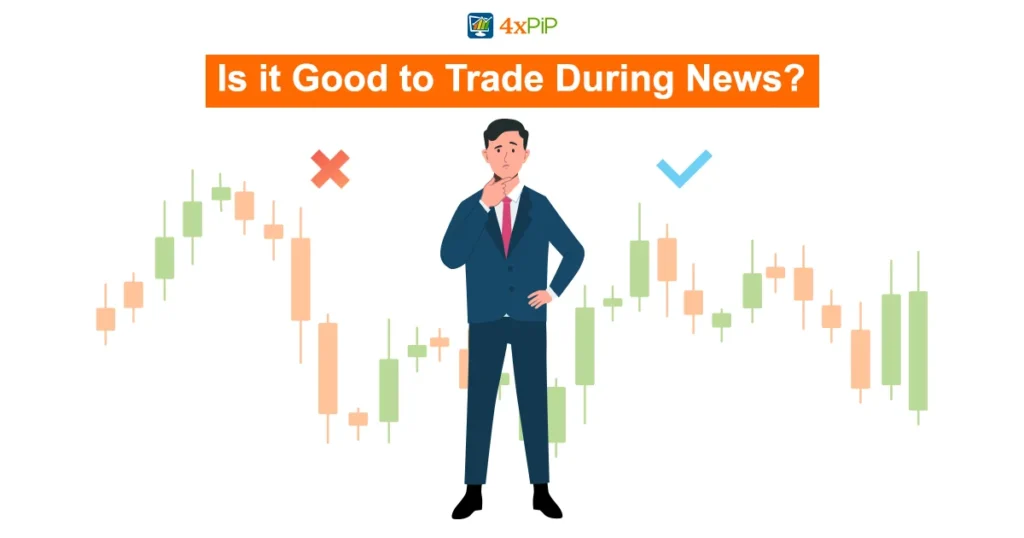Trading during news events can be a double-edged sword, presenting lucrative opportunities while introducing heightened risks due to the market’s often unpredictable reactions to unexpected data. As we delve into this comprehensive guide, we’ll explore the various facets of trading during news events, ranging from the types of news that influence markets to the strategies traders can employ for successful navigation. In this dynamic landscape, 4xPip stands as a trusted ally for traders, providing essential tools and guidance. For further support or inquiries, contact their experts at [email protected]. As we unravel the complexities of trading during events, 4xPip remains dedicated to empowering traders with valuable insights.
Types of News Events:

Periodic or Recurring News:
Scheduled releases of economic data, interest rate decisions, and earnings reports are vital components of the trading landscape. These events are usually known in advance, allowing traders to prepare for potential market shifts. Economic indicators, central bank decisions, and corporate earnings reports fall under this category, significantly impacting market sentiment and shaping expectations.
Unexpected or One-Time News:
In contrast, unforeseen events like geopolitical conflicts, natural disasters, or terrorist attacks can create sudden and unprecedented disruptions in the financial markets. These occurrences are challenging to predict, making them particularly impactful. The market’s reaction to unexpected news events tends to be swift and can induce panic or euphoria among traders, depending on the nature and severity of the event.
Factors Influencing Market Reactions:
Consensus vs. Actual Outcome:
One crucial element in understanding market reactions is the relationship between the consensus forecast and the actual outcome of a news event. Market participants often anticipate the outcome based on surveys or expert analyses. When the actual results deviate significantly from these expectations, the market can experience rapid and pronounced adjustments. The magnitude and direction of the adjustment depend on whether the outcome is better or worse than anticipated.
Relevance and Importance:
Not all news events carry the same weight in the financial markets. The relevance and importance of news depend on various factors, including its significance for specific currencies, stocks, or commodities. For instance, economic data from the United States might have a more pronounced impact on the U.S. dollar and global markets compared to a local political event that only affects a specific country or region. Additionally, the importance of events can fluctuate based on current market conditions and trends. For instance, during a period of rising prices, inflation data may attract heightened attention, whereas it may receive less scrutiny during a phase of stable prices.
Market Sentiment and Positioning:
Understanding market sentiment and positioning is crucial for interpreting and anticipating market reactions during news events. Market sentiment refers to the collective mood and attitude of traders toward the market, which can be bullish, bearish, or neutral. The market positioning, on the other hand, reveals the quantity and direction of existing trades in the market, indicating whether the market is overbought, oversold, or balanced. Both sentiment and positioning can significantly influence how the market responds to news events, creating opportunities for profit-taking, triggering stop-loss orders, or prompting trend reversals.
Strategies for Trading During News Events:
Trade the Breakout:
One popular strategy for trading during news events is the breakout strategy. Traders employing this approach enter a trade in the direction of the market movement following a significant breakout triggered by an event. To identify potential entry and exit points, technical indicators such as support and resistance levels, trend lines, or moving averages can be instrumental. Traders may also use stop-loss orders to protect their positions in case the breakout fails or experiences a reversal.
Trade the Retracement:
Contrary to the breakout strategy, the retracement strategy involves entering a trade in the opposite direction of the initial market movement after a news event causes a temporary spike or dip in the price. Technical indicators such as Fibonacci retracements, pivot points, or oscillators can assist traders in identifying retracement levels and setting target levels. Similar to the breakout strategy, implementing stop-loss orders is essential to manage risks and protect positions from potential retracement continuation or a return to the original trend.
Trade the Volatility:
For traders seeking to capitalize on heightened market volatility during events, the volatility trading strategy is a compelling option. This approach involves entering multiple trades in both directions before and after a news event, anticipating substantial market movements. Traders can implement a straddle or strangle strategy, utilizing a combination of call and put options to profit from increased volatility. To manage risk, employing stop-loss orders is essential, especially in situations where the market does not exhibit the anticipated level of movement or moves in an unfavorable direction.
Summary:
In conclusion, trading during news events demands a delicate and informed approach. Success in navigating the complexities and seizing opportunities relies on a thorough understanding of different news types, market dynamics, and the implementation of suitable strategies. Traders are encouraged to approach news-driven trading with a continuous learning mindset, adapting strategies to evolving market conditions. As you delve into this guide, consider 4xPip as your ally, offering essential tools and expert guidance to empower your trading journey.





